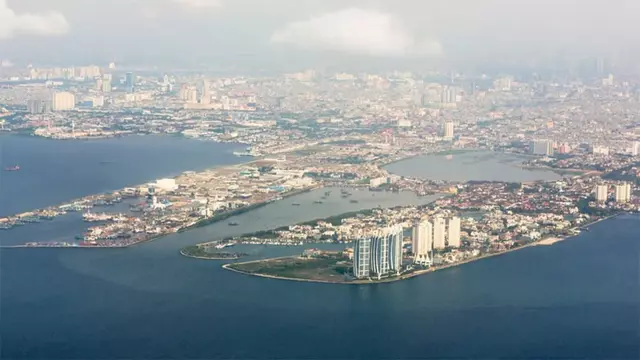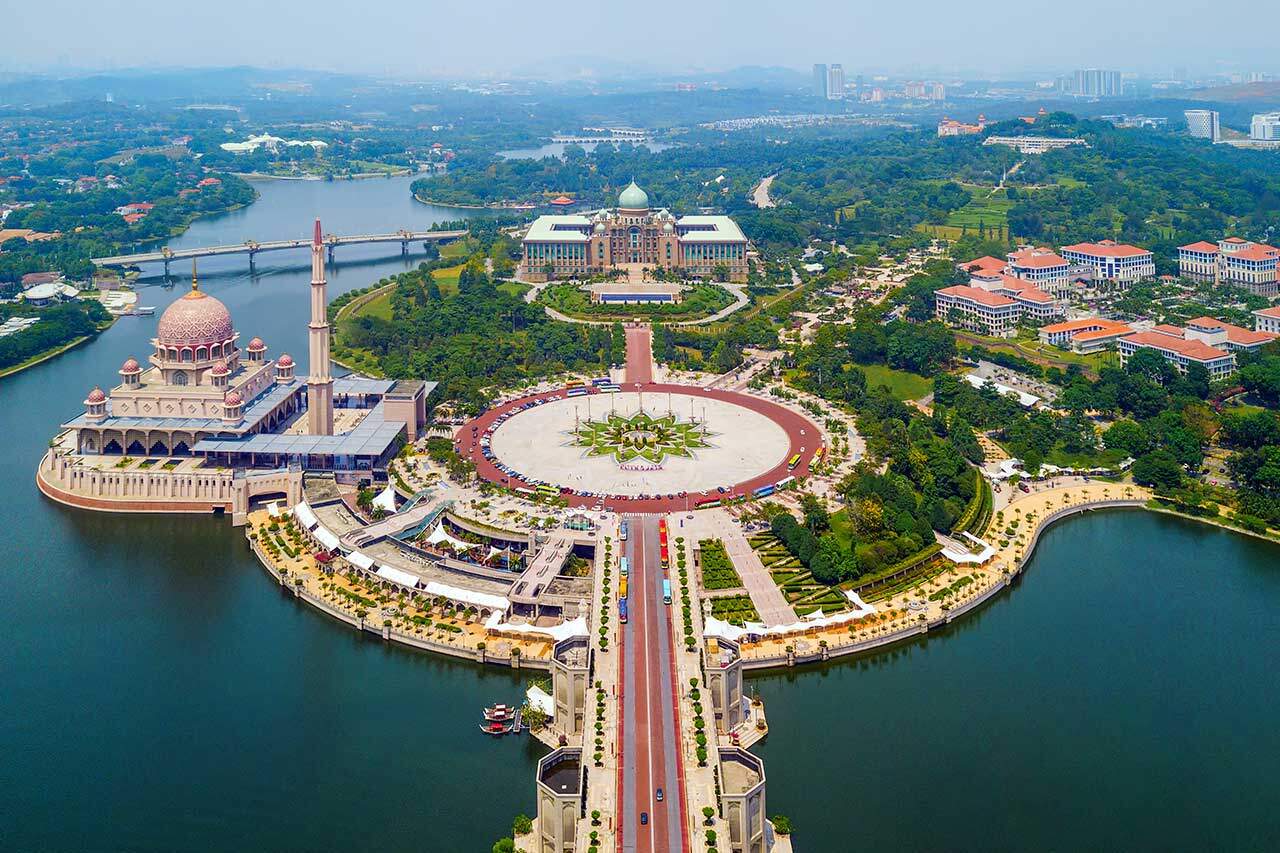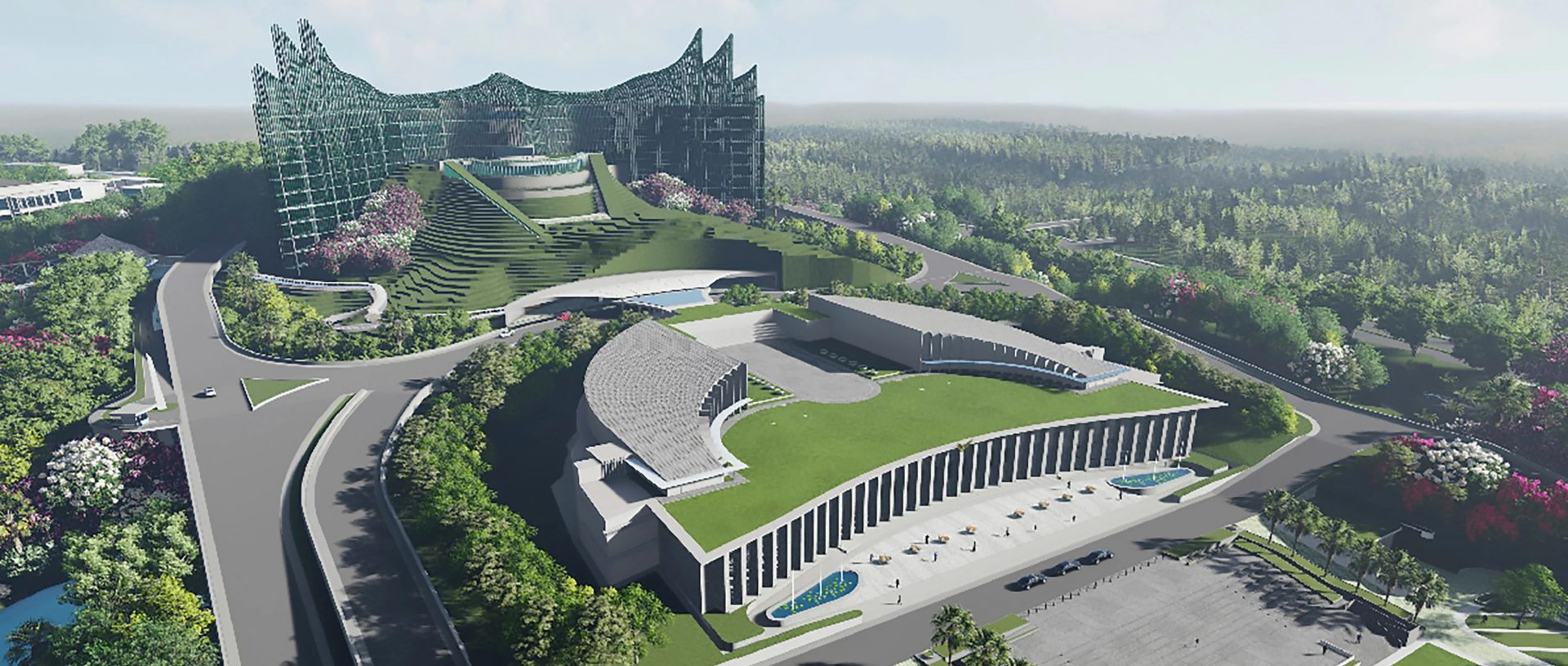Nusantara is sited on the island of Borneo, and is planned to replace a sinking Jakarta, which is doubly threatened by rising seas, as Indonesia’s capital city.
Jakarta, situated on the northwest coast of Java at the mouth of the Ciliwung River, stands as Indonesia’s capital and its largest urban centre, as well as one of the largest cities in the world.
With a city population of approximately 10.6 million, Jakarta swells to about 35 million in its sprawling metropolitan area, which encompasses multiple satellite cities, such as Bogor, Depok, Tangerang, South Tangerang, and Bekasi.
Yet, this immense metropolis faces a significant challenge – it’s sinking, with nearly 40% of its expanse already now below sea level. Studies have shown that Jakarta is sinking at a rate of 5 to 10 cm per year, and up to 25 cm in some of the northern coastal areas. (Ironically, most of the subsidence is not a purely natural phenomenon at all, but rather a combined result of the illegal extraction of groundwater, along with long-ago city planning decisions made during Dutch colonial rule and modern development, as vast tracts of concrete and pavement prevents rainwater from easily refilling the underground aquifers.) Coupled with inexorably rising seas resulting from climate change, one of the world’s largest cities is faced with an existential threat.

For an excellent primer on how and why Jakarta is sinking, watch this explainer video from Vox Media:
MOVING HOUSE
In response, the Indonesian government has set in motion plans to relocate the capital to Nusantara, a new city emerging on the eastern coast of Borneo, approximately 1,400 km northeast of Jakarta.
Envisioned as a strategic (and necessary) move, this shift is estimated to require a staggering $35 billion investment and is slated for completion by 2045. However, an initial cohort of around 6,000 government employees is anticipated to make the transition in time for the next presidential inauguration in October 2024.
This historic decision finds precedent in similar capital relocations worldwide – Brazil’s shift from Rio de Janeiro to Brasilia in 1960 and Nigeria’s transition from Lagos to Abuja in 1991. In fact, even Malaysia shifted the administrative portion of its capital from Kuala Lumpur to the newly built Putrajaya in a bid to mitigate KL’s growing traffic woes in the late 1990s. Putrajaya was named as Malaysia’s administrative capital in February 2001, though KL remains the official capital, as well as the home of Malaysia’s Parliament.

What sets Indonesia’s move apart, however, is its genesis in response to the pressing climate crisis. Jakarta, grappling with the title of the world’s fastest-sinking megacity due to rising sea levels, catalysed the Indonesian government’s resolve to create a new capital.
The selected site of Nusantara in East Kalimantan epitomises President Joko Widodo’s geopolitical vision, prioritising coastal proximity and minimal risk from seismic activities. Its nomenclature, Nusantara, which roughly translates to ‘the outer islands,’ symbolises Indonesia’s archipelagic unity and spans the nation’s vast expanse of over 17,000 islands, home to a population of some 276 million, over half of whom live on the island of Java, where Jakarta is located, making it the most populous island – and one of the most densely populated – in the world.

HELLO, NUSANTARA!
Construction of Nusantara commenced in July 2022, mobilising upwards of 100,000 workers initially, escalating to 150,000 to 200,000 as the project gained momentum. The city’s blueprint envisions a sustainable urban paradigm, with rather ambitious aspirations to achieve 100% reliance on renewable energy by 2045.
Nusantara has been touted as a major development initiative, but one that is keeping with Indonesia’s stated commitment to environmental stewardship, two things that typically stand in complete opposition to one another. Plans include the establishment of a 50-megawatt solar plant and the phased introduction of electric vehicles, envisaging a vibrant, eco-friendly urban ecosystem.
While it all sounds good in theory, however, only time will tell if these lofty ideals are actually put into meaningful practice. Critics have already decried the damage being done to Borneo’s ancient rainforest by the sheer scale of constructing a new city from scratch. It’s a colossal project that’s already having a significant environmental impact on the world’s third-largest island.
“The big question, of course, is how and if they’ll achieve these ambitions,” says Kian Goh, who studies urban planning at the University of California, Los Angeles, in an article published by Science.org. “Planning scholars are by and large skeptical of plans for smart or sustainable cities ‘from scratch,’” she says. And spillover effects across Borneo, including deforestation, “are likely to be far greater than the direct impacts within the city boundaries, unless carefully managed,” says ecologist Alex Lechner of Monash University, Indonesia.
Moreover, notable figures like former UK Prime Minister Tony Blair and Abu Dhabi’s Crown Prince Mohammed bin Zayed Al Nahyan are actively engaged in the project’s steering committee, signifying global interest and collaboration. In October, the Tony Blair Institute inked an agreement to establish a research centre in the burgeoning capital.
However, funding remains a critical challenge. While the estimated project cost stands at $35 billion, the Indonesian government’s financial commitment covers only a fraction, prompting uncertainties regarding funding sources. Notably, Japan’s SoftBank withdrew from investing in the venture in March 2022 over concerns about the return, underscoring the complexity of financing this ambitious endeavour.
It’s also very much worth noting that relocating the capital won’t save Jakarta, even if the planned 4.6 million people ultimately move to the new site. Recognising this, the Indonesian government is also building seawalls to protect the millions of people still living along the northwestern coast of Java.
Information from Business Insider, Jakarta Post, Mongabay, Science.org, and Wikipedia contributed to this article.
"ExpatGo welcomes and encourages comments, input, and divergent opinions. However, we kindly request that you use suitable language in your comments, and refrain from any sort of personal attack, hate speech, or disparaging rhetoric. Comments not in line with this are subject to removal from the site. "



















